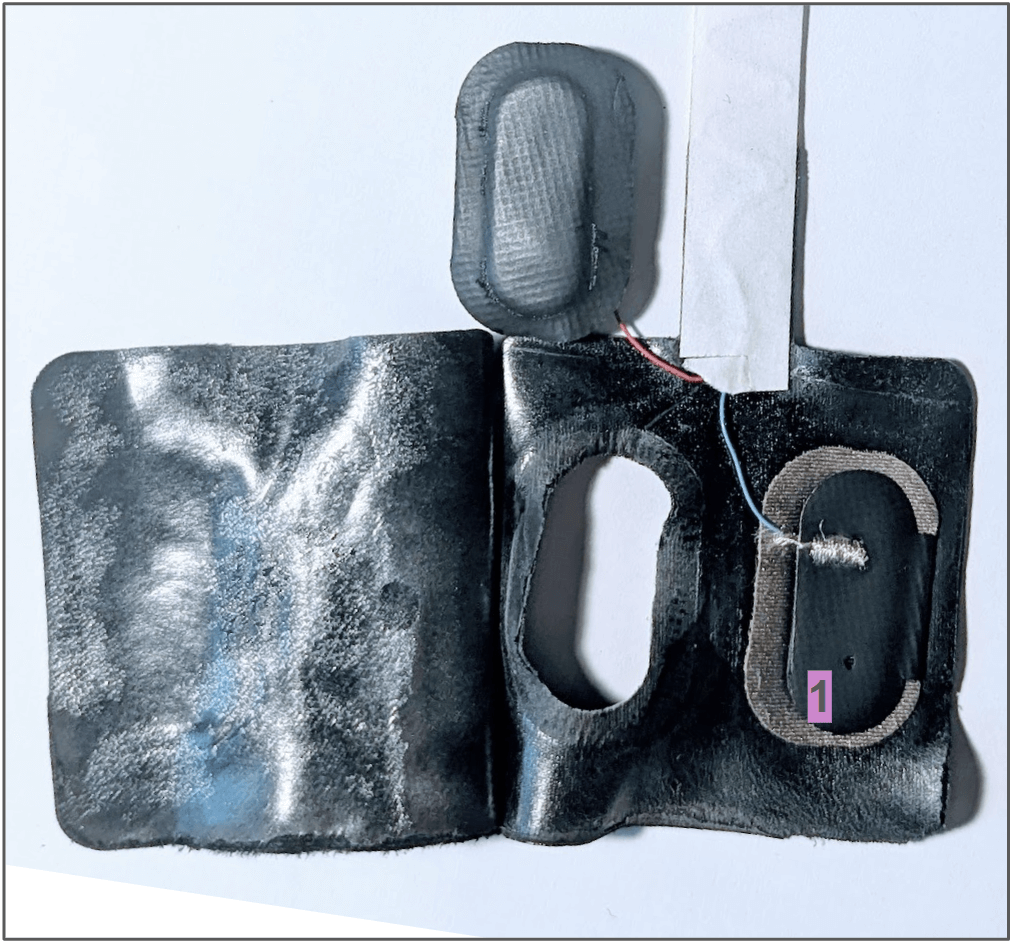Softmatter silicone sensor teardown
![]()
In early 2025, we surveyed the smart textile landscape. We found that smart textiles make vast promises as a powerful new materials category. However, smart textile products have yet to properly deliver on those promises because designing with smart textiles is not yet like working with components from mature industries.
While writing a state-of-the-industry report titled “Smart Textiles: A Guide to Designing with Their Complexity,” I tore down a set of smart textile sensors from Softmatter. I assumed that these smart textile sensors would be simple — using as few different soft goods materials as possible. Perhaps the electrical leads would be embroidered using conductive thread, and then metal snaps would be riveted through the conductive thread to make a solderable connection.
To my surprise, some of these sensors were quite complex. For example, the silicone sensor architecture used a plethora of soft goods materials: conductive film coatings, conductive yarns in a knit, conductive and nonconductive adhesives, isolating foams, and conductive embroidery that directly captured the stranded wire of electrical leads. This teardown documents the complexity and surprises of the Softmatter silicone sensor from a mechanical engineering perspective, along with recommendations on how it could be even better.

informal is a freelance collective for the most talented independent professionals in hardware and hardtech. Whether you’re looking for a single contractor, a full-time employee, or an entire team of professionals to work on everything from product development to go-to-market, informal has the perfect collection of people for the job.